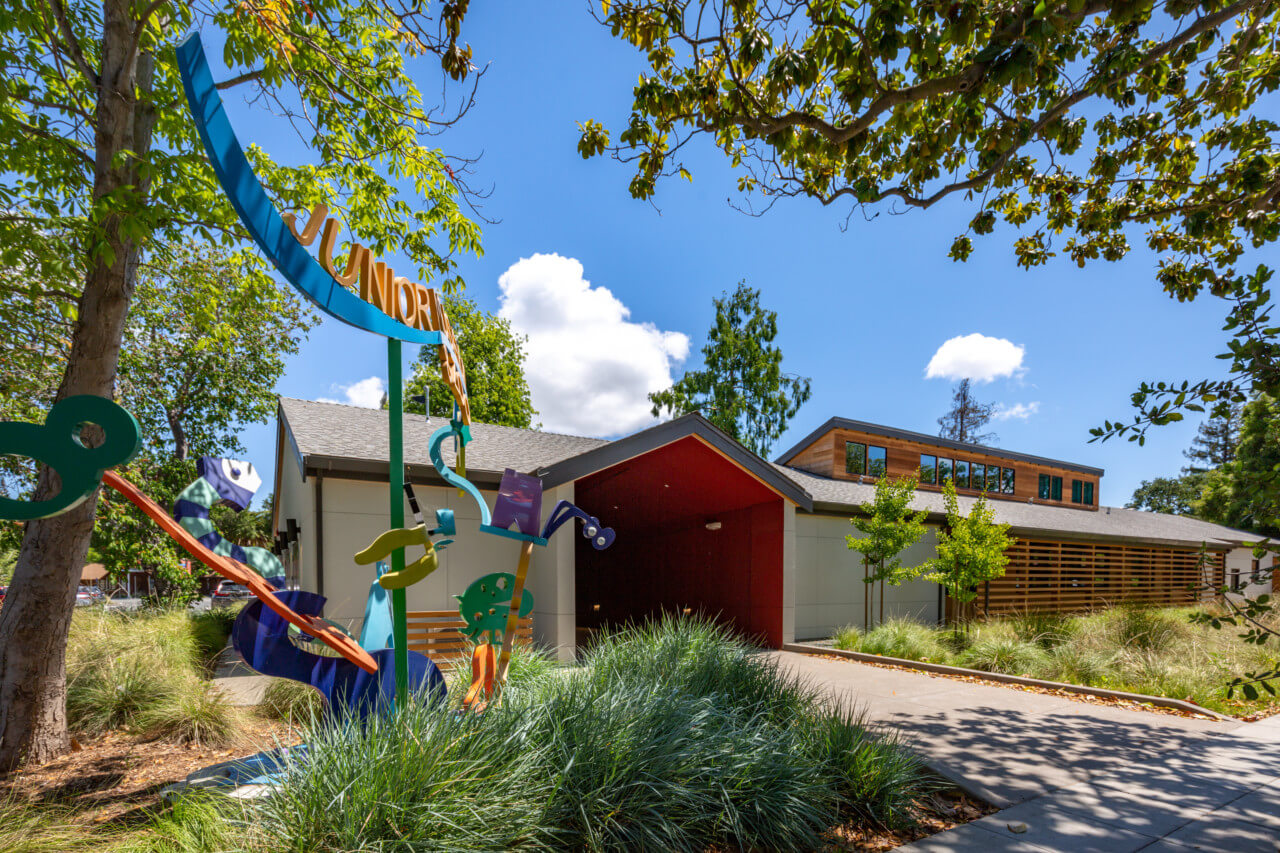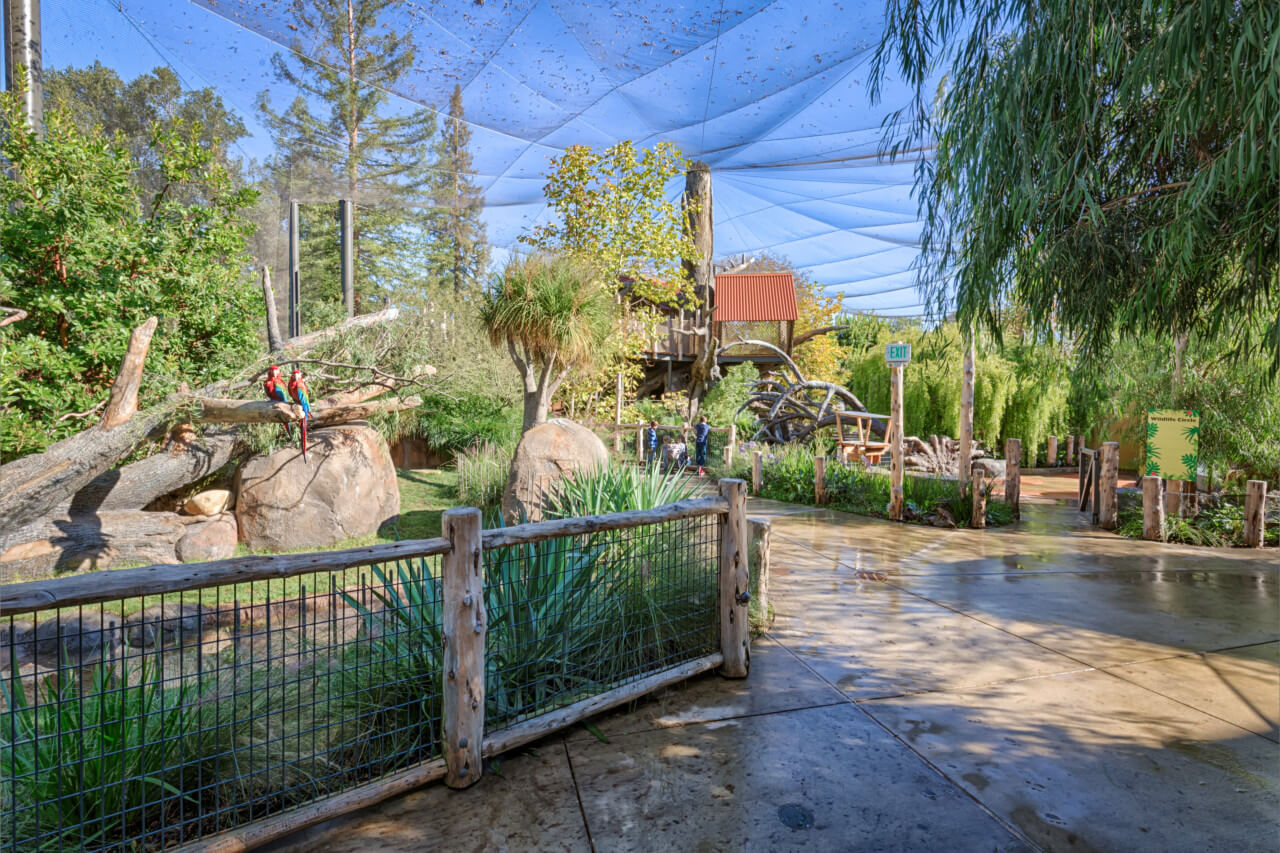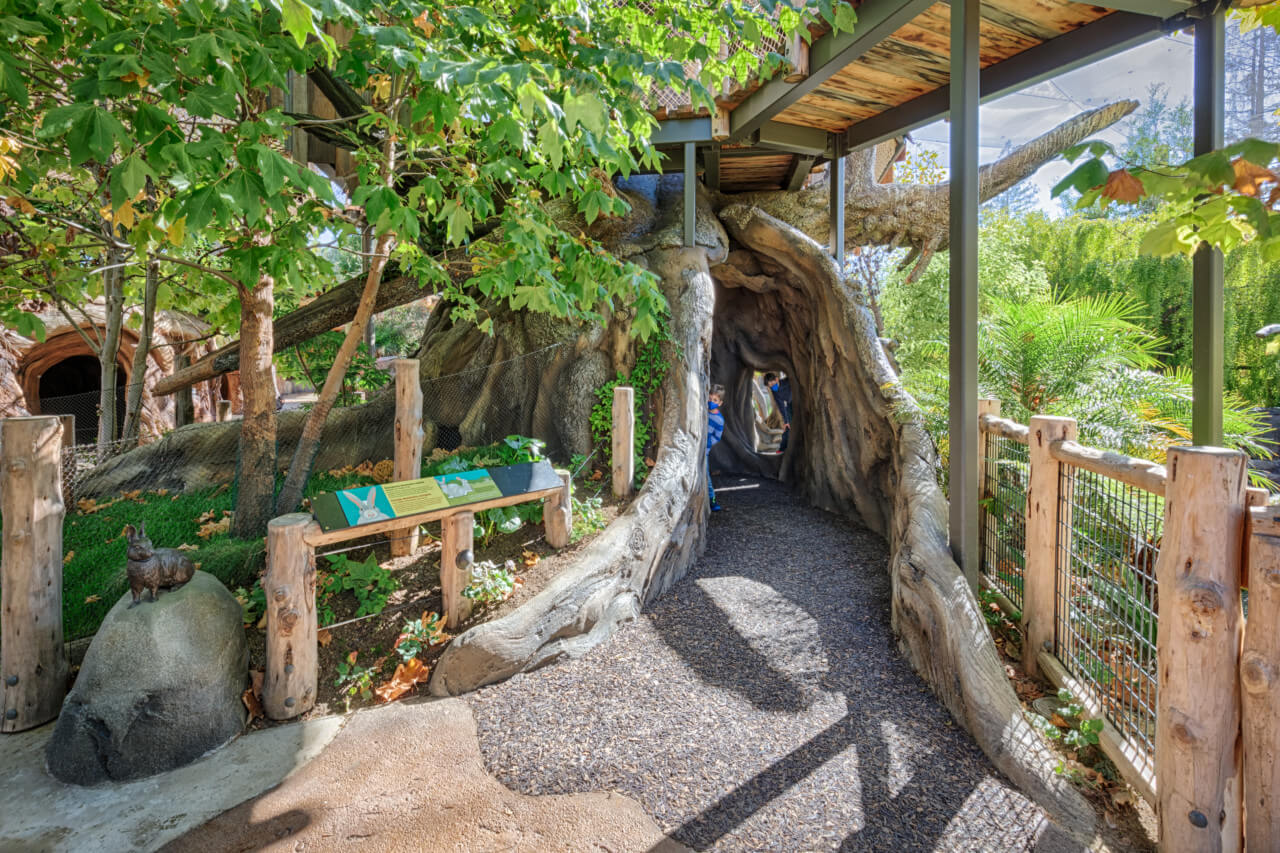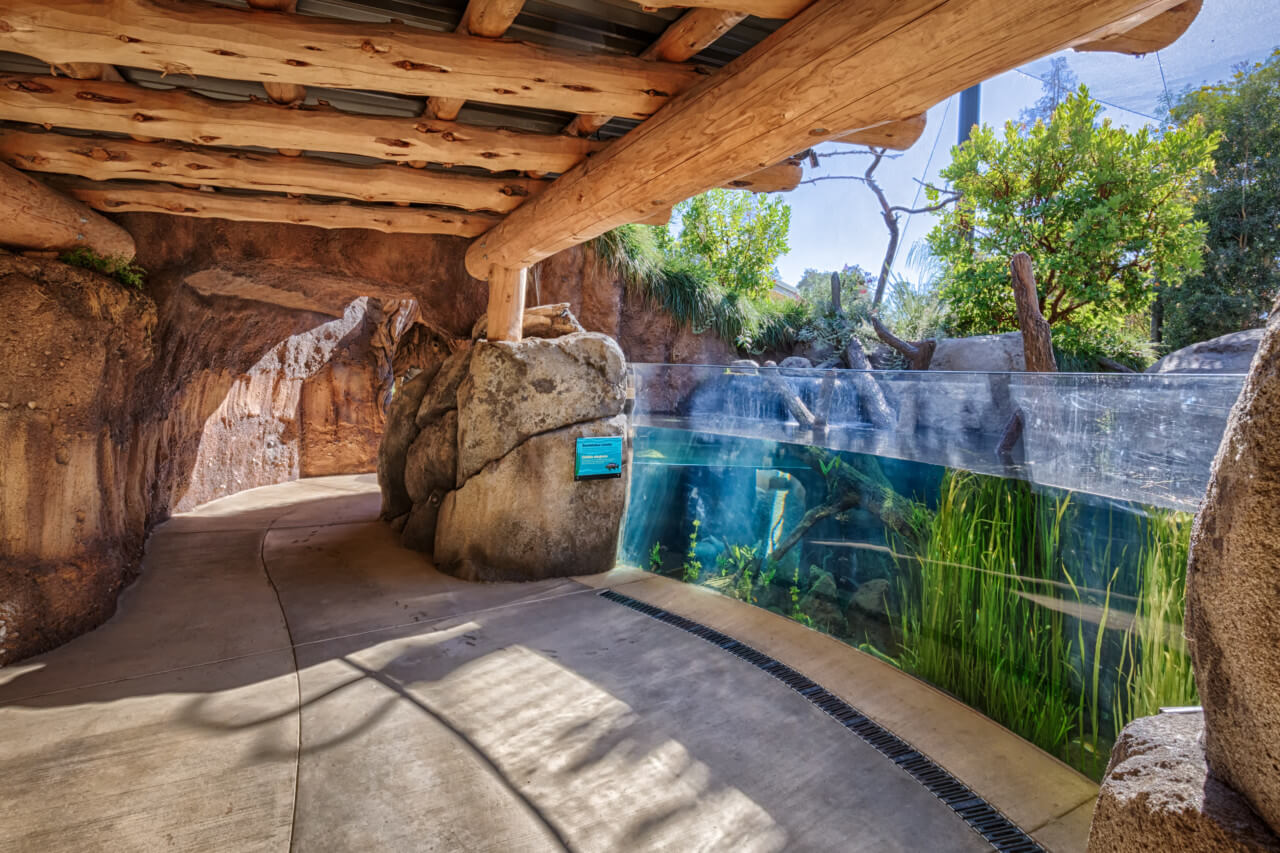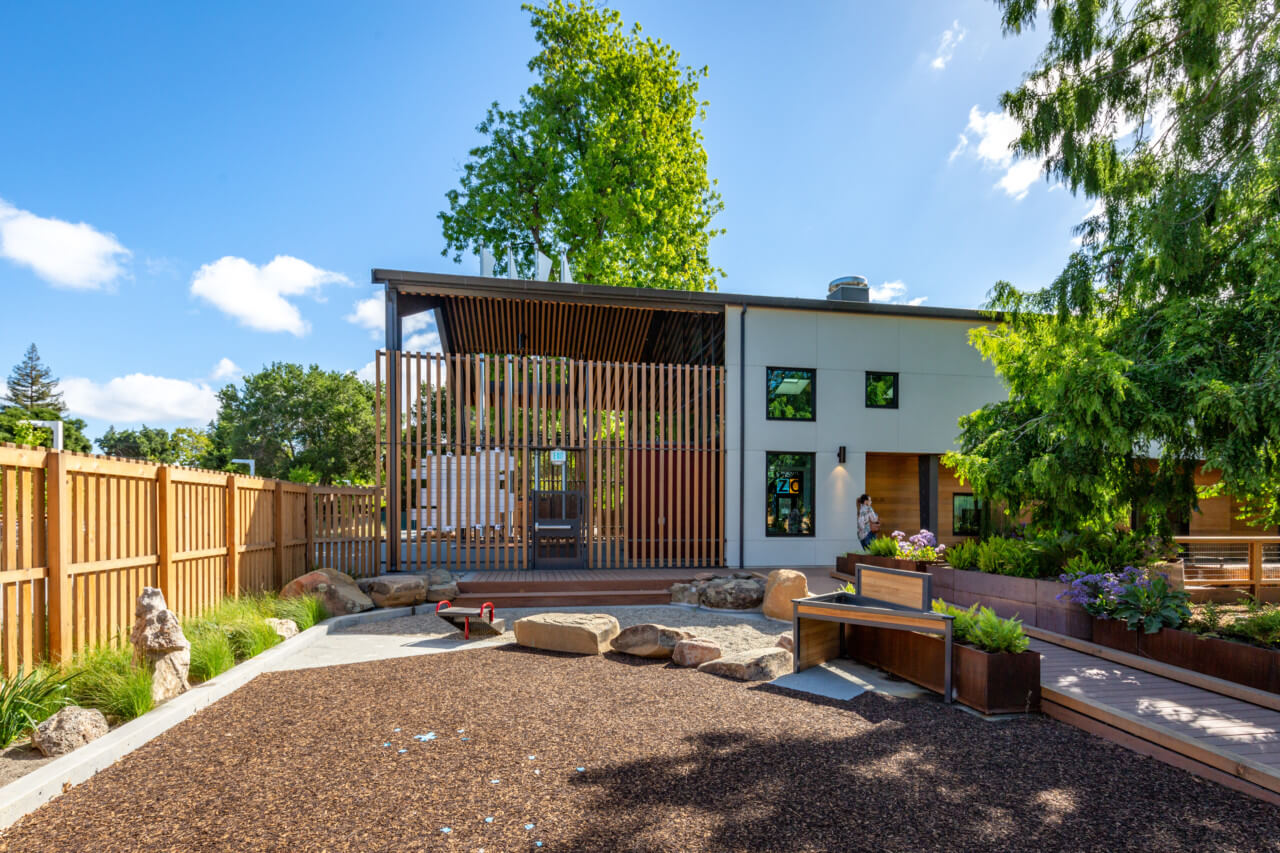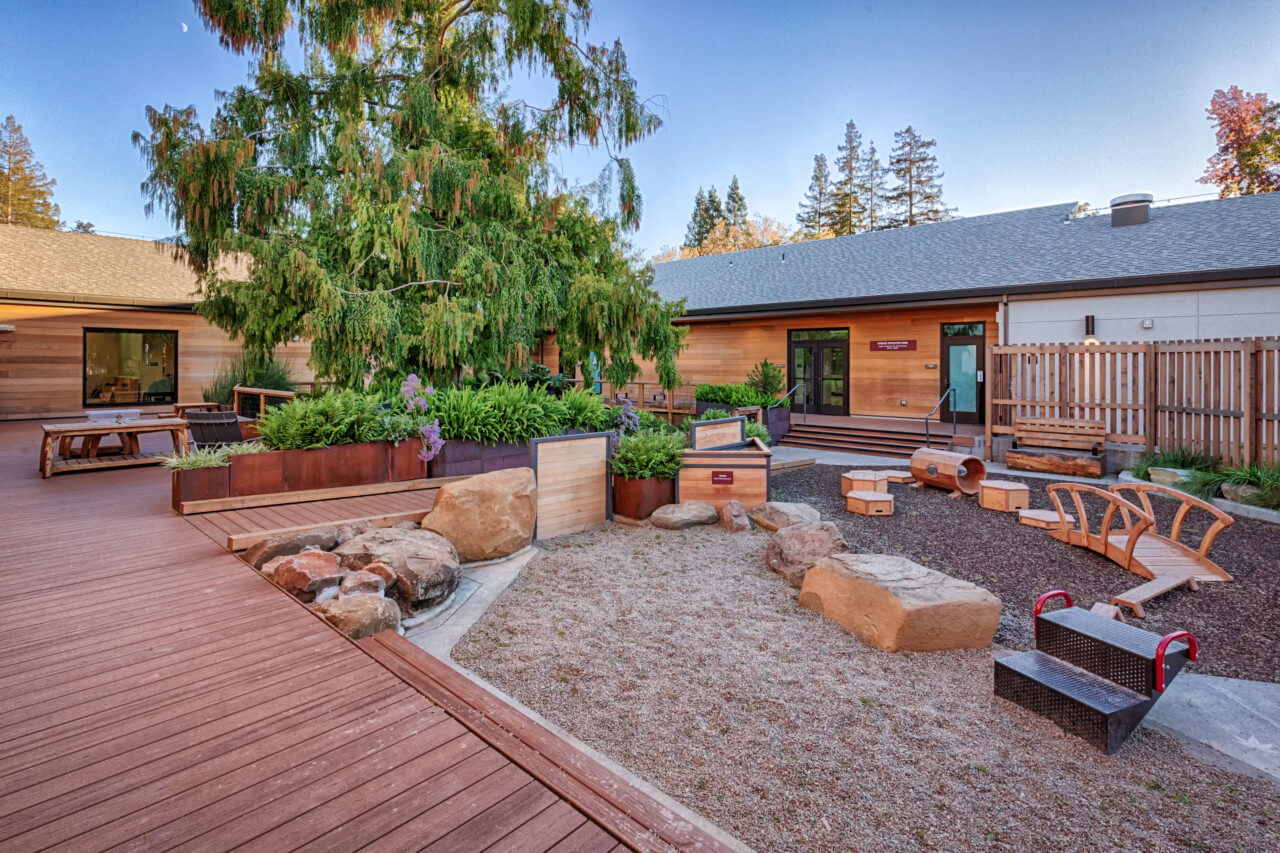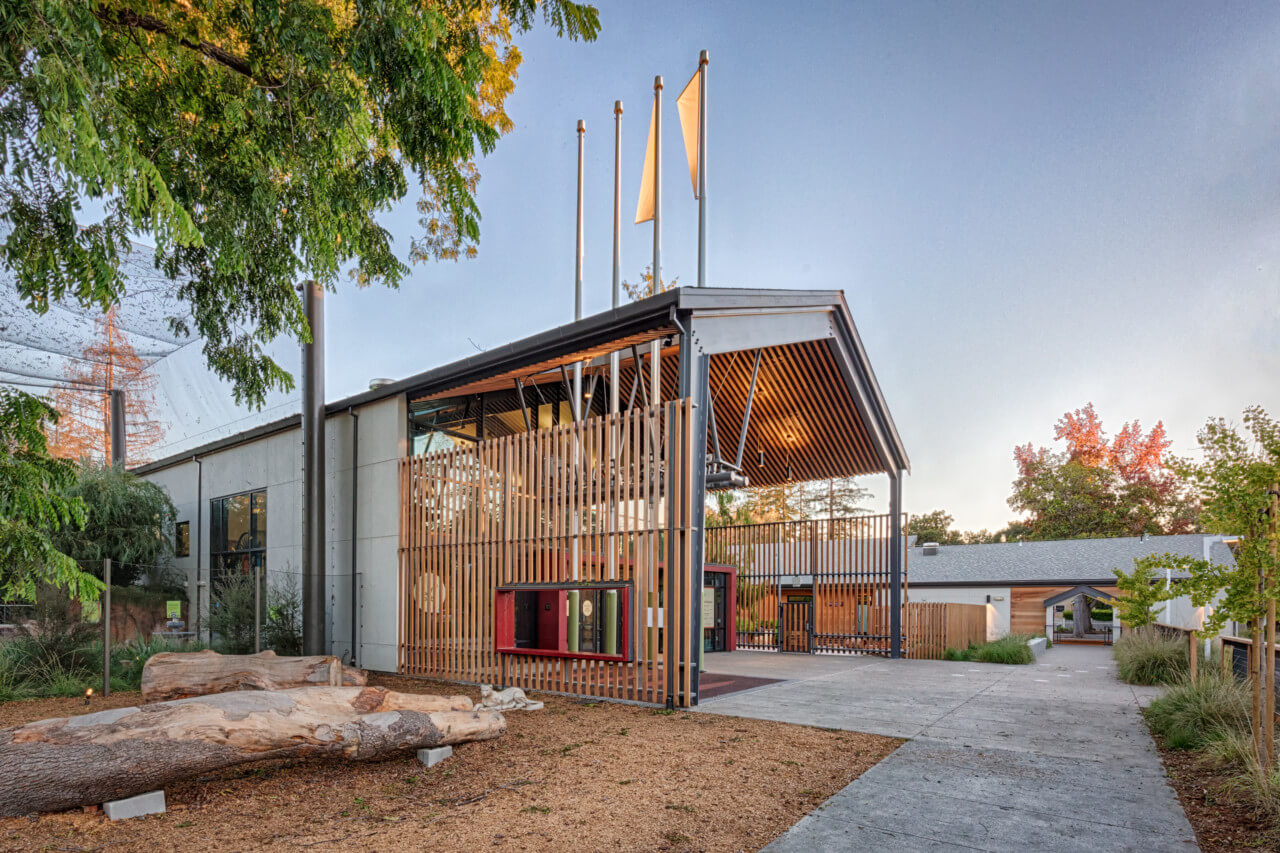The Palo Alto Junior Museum & Zoo (JMZ), established in 1934 in the basement of a local elementary school as the first dedicated children’s museum west of the Mississippi according to the city, reopened at its long-time home at Rinconada Park last month. The November 12 reopening marked a new era for the beloved Silicon Valley attraction after an exhaustive, years-in-the-making reimagining in which the existing 1941 facility was razed and rebuilt from the ground up to better accommodate a new generation of visitors.
As noted by the city back in 2018 when work first got underway, the JMZ had found “itself constrained by a facility that no longer reflects the needs of its visitors, collections, or operations,” and was unable to obtain the desired accreditation for both the museum and zoo due to inadequate storage and support spaces. “Accessibility and safety concerns” regarding the facility and surrounding site were also an issue that the revamp sought to remedy.
Spread across three sustainably landscaped acres, the JMZ is now nearly twice the size of its old self, including the 15,200-square-foot main museum building, featuring an exhibit hall and education center, and aviary-style 18,800-square-foot zoo home to roughly 50 species including raccoons, flamingos, cockatoos, meerkats, and a 21-year-old African spurred tortoise named Edward.
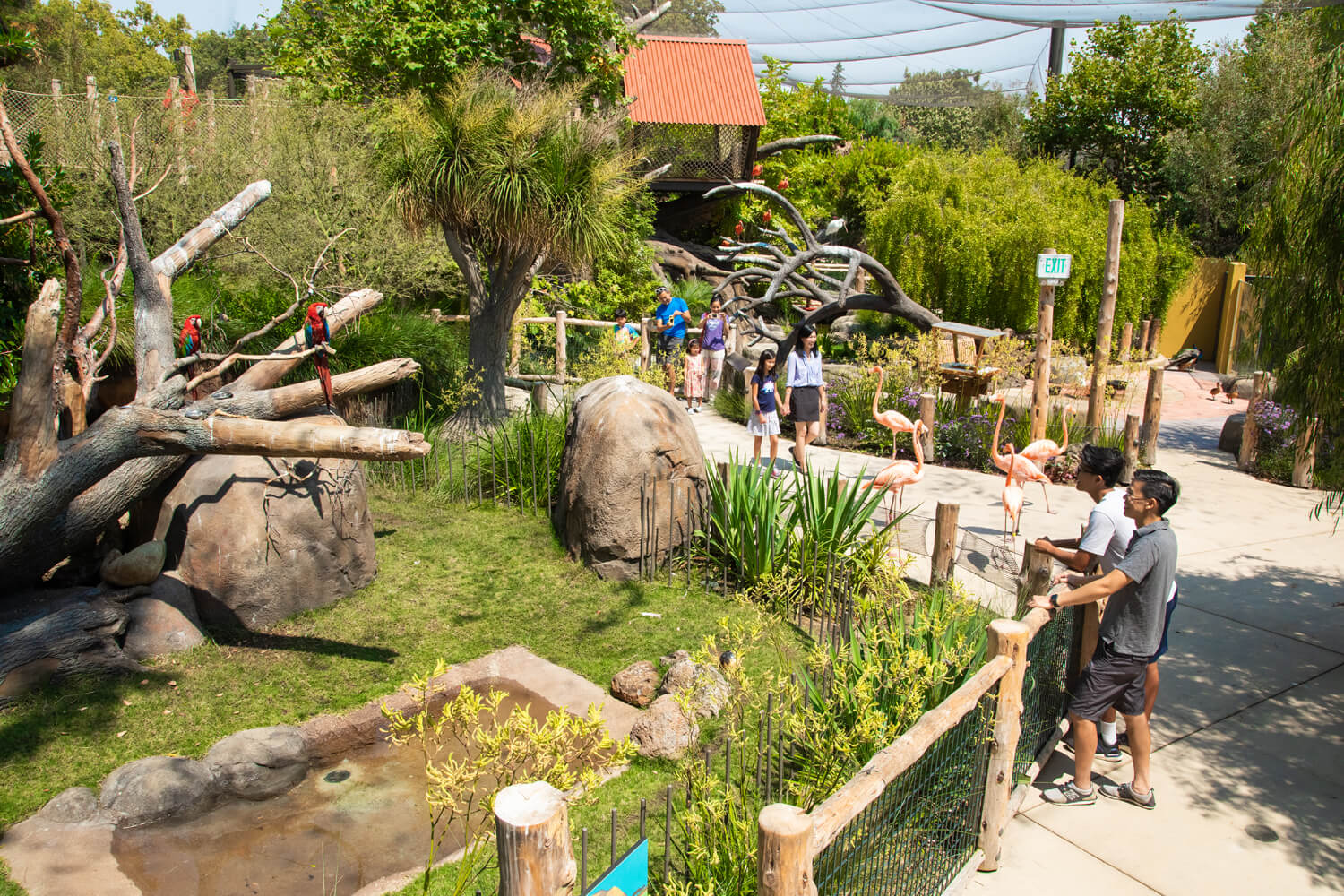
The City of Palo Alto, which operates the JMZ as part of its Community Services Department, broke ground on the $33 million facility in 2018 following approval by Palo Alto City Council in December 2017; the project was slated for completion in 2020 but, as evidenced by its reopening just a few weeks ahead of 2022, was slowed in part by the COVID-19 pandemic and other factors. With its old facility demolished to make way for a new one on roughly the same footprint, the JMZ was relocated to the Cubberley Community Center during construction.
Palo Alto-based CAW Architects, best known for its Bay Area educational commissions, served as the project architect and collaborated with a larger design team that included, among others, Studio Hanson|Roberts, a Bainbridge Island, Washington-based practice specializing in zoo planning and design; landscape architecture firm Vallier Design Associates, structural engineer Hobach-Lewin, and general contractor Vance Brown Builders. As detailed by the firm, CAW’s role was an expansive one, overseeing the site master plan on the north side of the 19-acre, redwood-studded Rinconada Park (Palo Alto’s second-oldest city park); architectural and interior design of the museum, classroom wing, and administrative spaces, exterior exhibit spaces, and zoo exhibit and support spaces.
As noted by CAW Architects, the new JMZ, while still relatively modest in size when compared to other zoos and children’s museums, is lofty in its ambitions and “fundamentally rethinks how to capture a child’s wonder and curiosity for the natural world and how to create rich and interactive learning experiences throughout.”
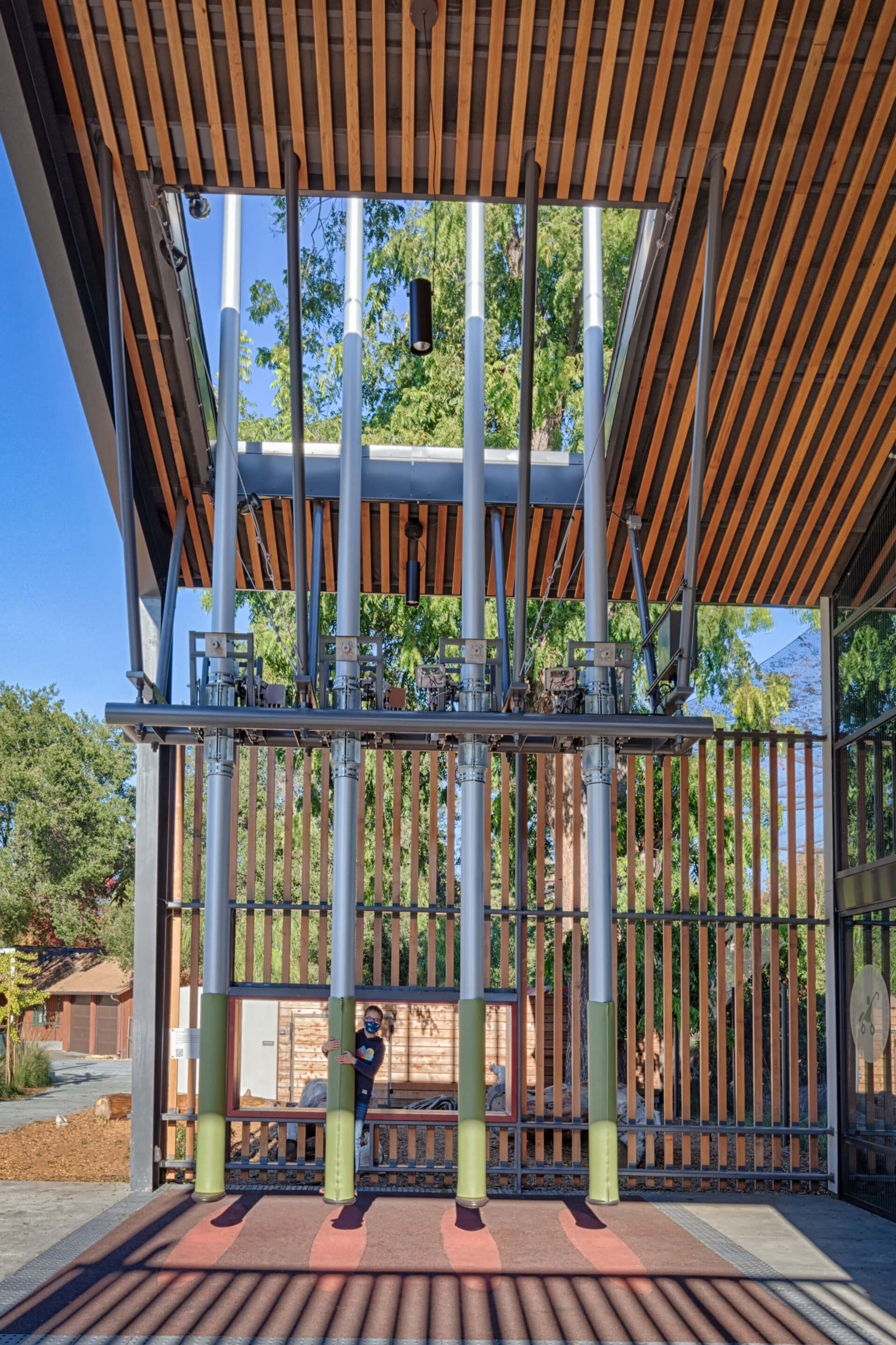
“We designed an inspiring and interactive space, where the architecture and experiences can spark a child’s curiosity and wonder, to explore science and nature in a fun and play-based environment,” said principal-in-charge Brent McClure in a statement.
With its gabled roof and clean forms, the museum building, per the firm, meets a “residential and agrarian vernacular” while echoing the surrounding neighboring and “inserting a modern interpretation” of the historic, Birge Clark-designed Lucie Stern Theater located just up the road. The main exhibit hall, illuminated by large windows and skylights, is populated with a range of interactive and kinesthetic exhibits in which curious young museumgoers can learn about a range of natural phenomena including gravity, motion, and magnetism. Notable are the museum’s “crawl logs,” where pint-sized visitors can clamber directly from the museum’s interior into the center of the zoo’s meerkat exhibit. Outside the main entrance is Sway, an interactive public art installation by Charles Sowers in which visitors can mount and ride on monumental, scissor-like pendulums.
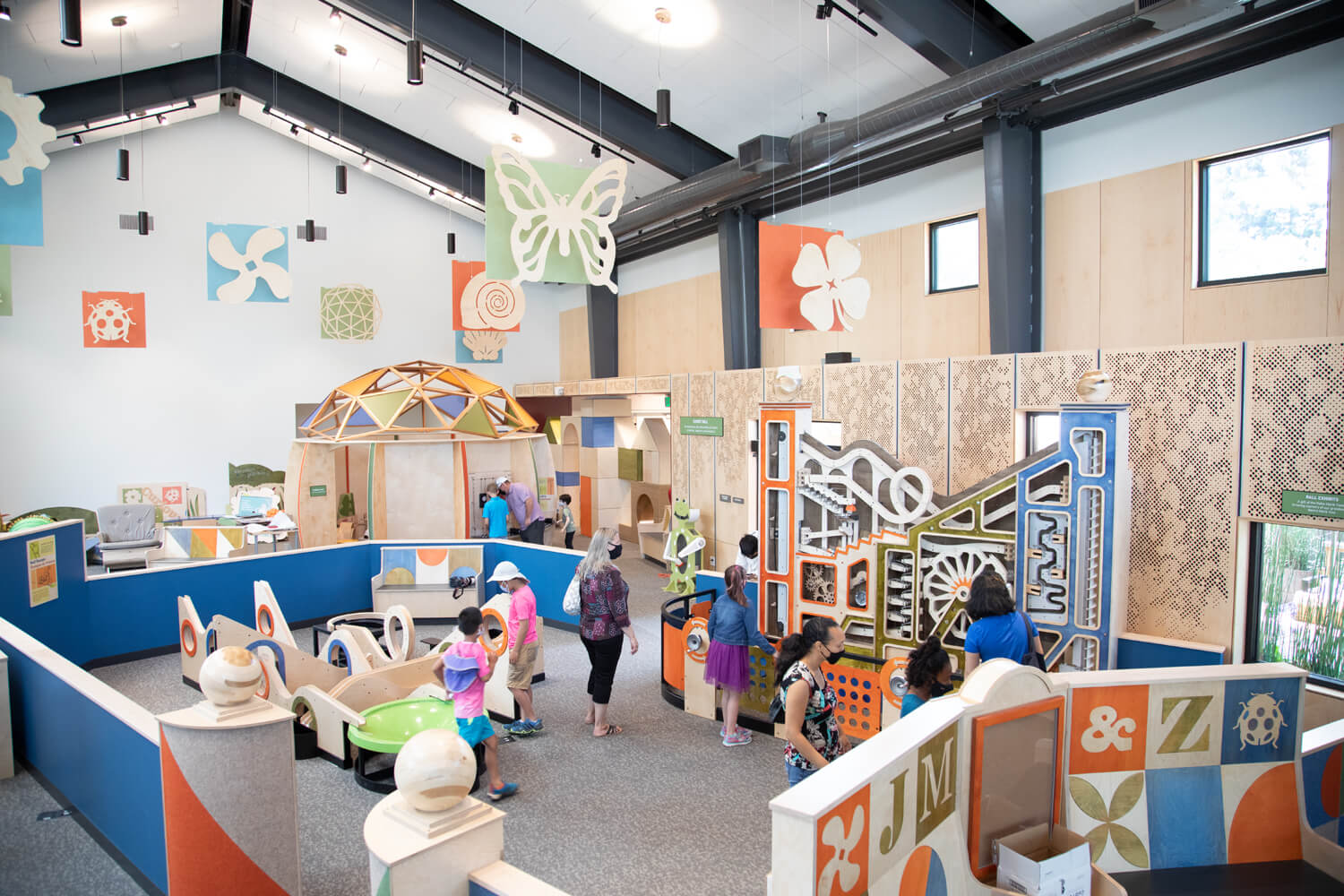
Realized as a soaring outdoor netted enclosure dubbed “Loose in the Zoo” where visitors can interact with the feathered residents, the zoo features exhibits that have been “layered vertically to give kids an opportunity to view the natural environment from different vantage points,” CAW explained. Fusing the different areas of the zoo together is a sprawling, wheelchair-accessible treehouse outfitted with rope bridges, ladders, net tubes, and viewing platforms from which kids (and adventuresome chaperones) can look down upon the entirety of the zoo landscape. For kids who may have become over-sensitized while exploring the campus (and for nursing mothers seeking respite), JMZ offers a pair of dedicated “calming nooks,” one located inside and the other outside.
(As for resident animals, they are either rescued pets and wildlife or were chosen to support the Association of Zoos and Aquariums Regional Collections Plan and Species Survival Program, according to the city.)
“Our exhibits all have multiple ways of approaching them,” JMZ Executive Director John Aikin told Palo Alto Online, stressing the myriad ways that the new facility was designed to accommodate visitors of all mental and physical abilities. “They [the exhibits] engage people of different ages, knowledge bases, and they include people of different abilities.”

Aiken added that the new JMZ, which also features audio text options, and braille, and large print tactile guides, is among the most accessible museums in the country. Per a city press release, the exhibits and habitats were designed according to the Smithsonian Guidelines for Accessible Exhibition Design and design partners from the California School for the Deaf, Vista Center for the Blind and Visually Impaired, the Magical Bridge Foundation, Santa Clara County Office of Education’s Inclusion Collaborative, Abilities United, and the Thinking Person’s Guide to Autism all served in collaborative roles.
Admission for kids (over 12 months old) and adults to the new JMZ, which was previously free, is $10. A bulk of the project—$25 million—was funded via donations to the nonprofit Friends of the Palo Alto Junior Museum and Zoo while the remainder of the funding came through private donations and the city, which contributed $8 million.






